Abstract
The red light inhibition of growth of the intact pea (Pisum sativum L. cv. Alaska) third internode was correlated with an increase in the content of cell wall-bound hydroxyproline. These changes were detected 3 hours after irradiation, and possibly at 1 hour. Far red light reversed the effects of red light. The iron chelator α,α′-dipyridyl reversed the red light effects on both growth and hydroxyproline content. Using segments incubated in vitro, no phytochrome-mediated change in hydroxyproline content could be observed, perhaps because of an overwhelming wounding response. If plants were irradiated in situ and grown for 8 hours before excision and incubation of segments, some enhancement of hydroxylation by red light was detectable both colorimetrically and radioisotopically. The red light inhibition of segment growth was reversed by α,α′-dipyridyl. These results are examined in reference to the role of extensin in normal and induced growth cessation.
Full text
PDF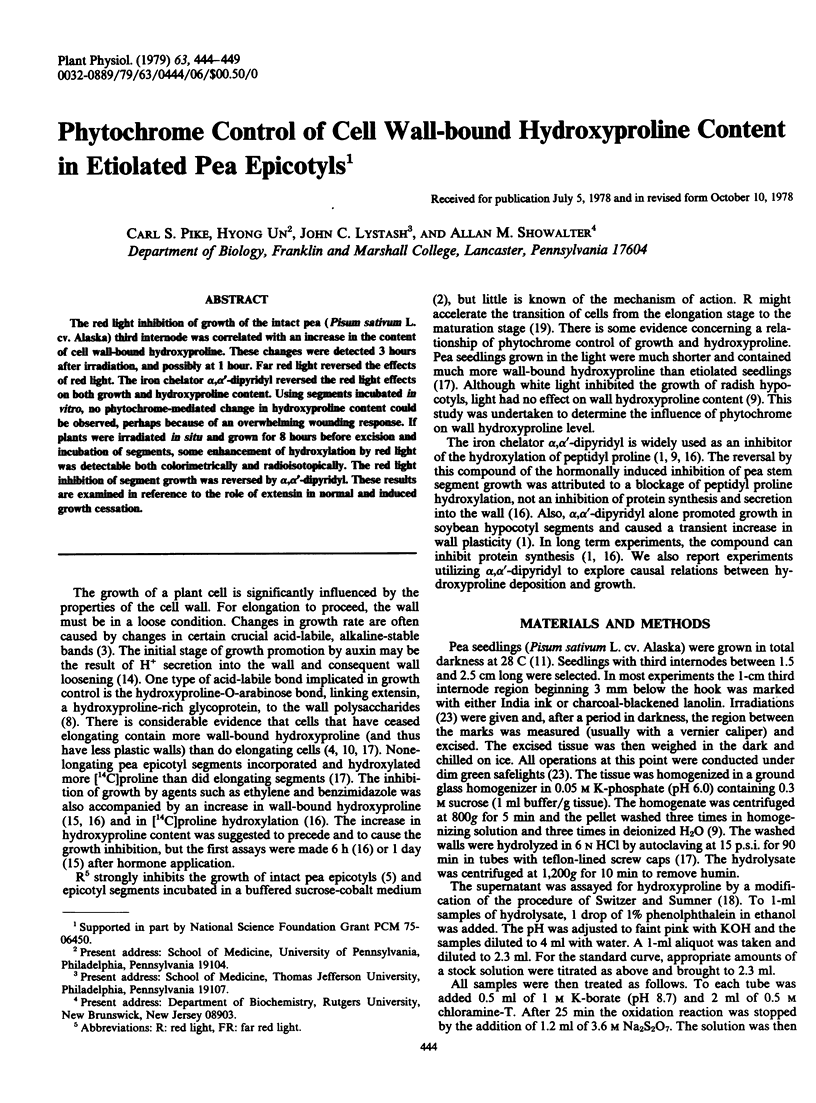

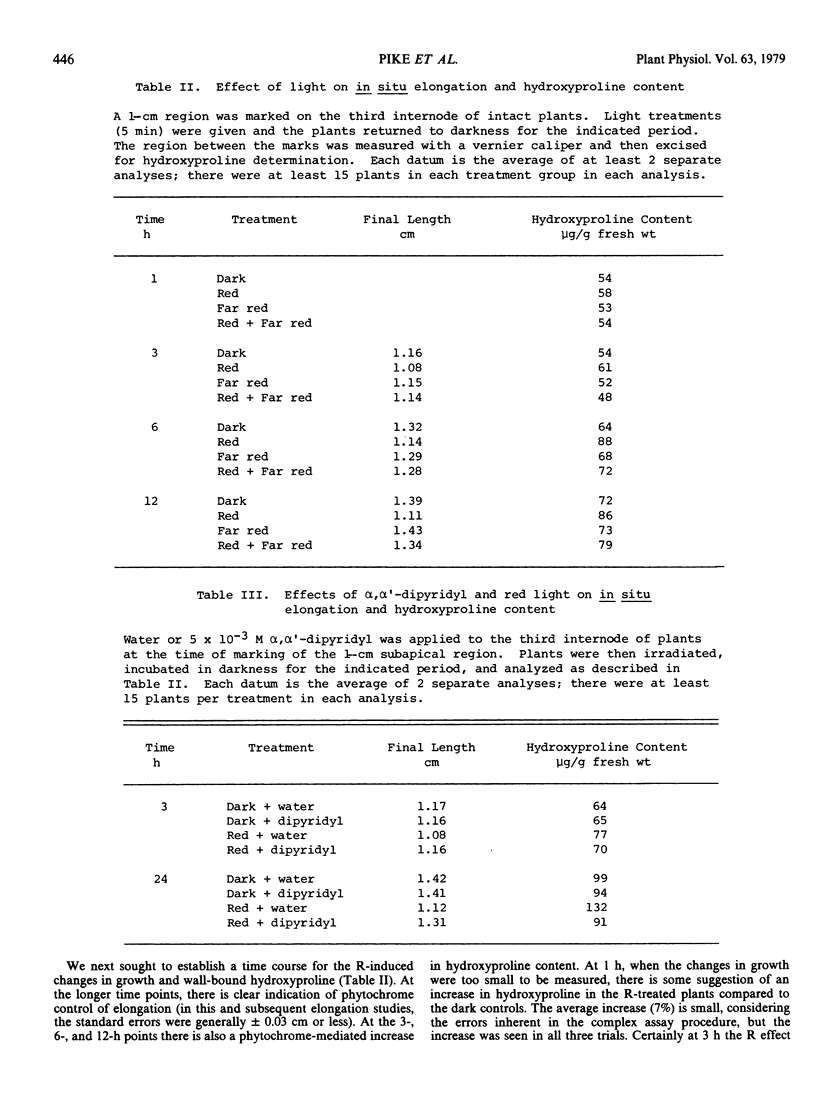
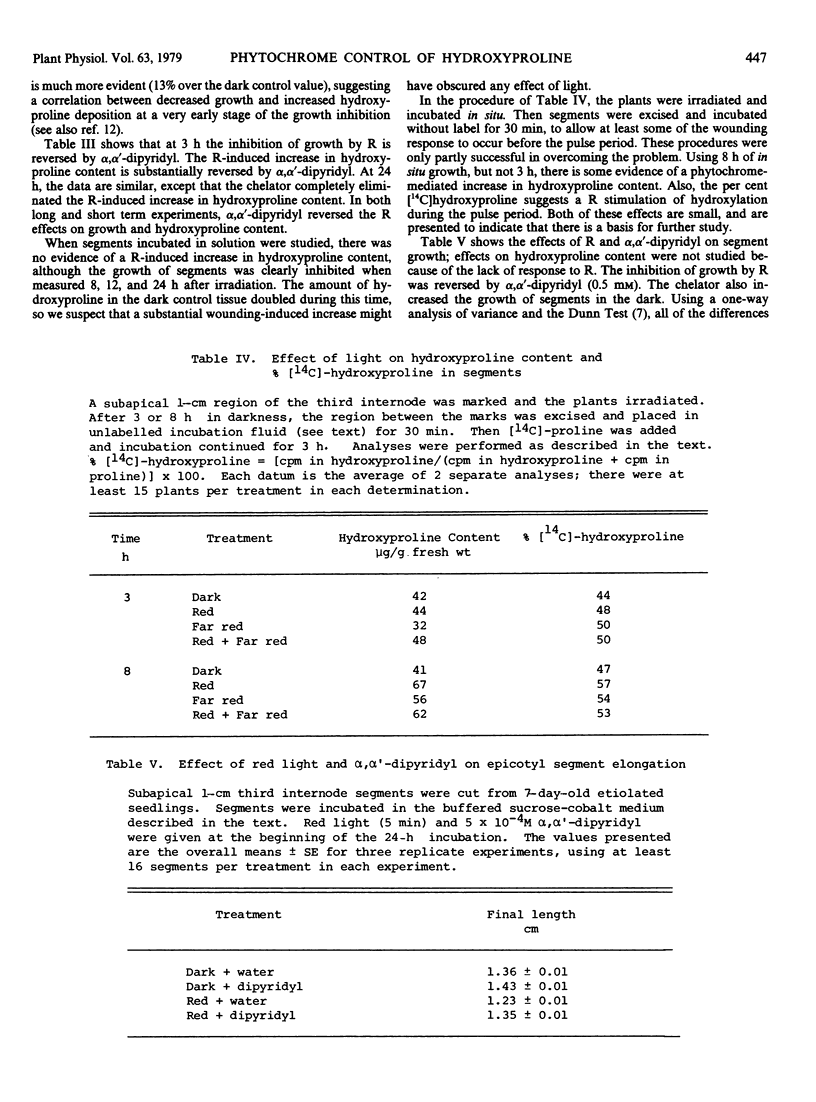
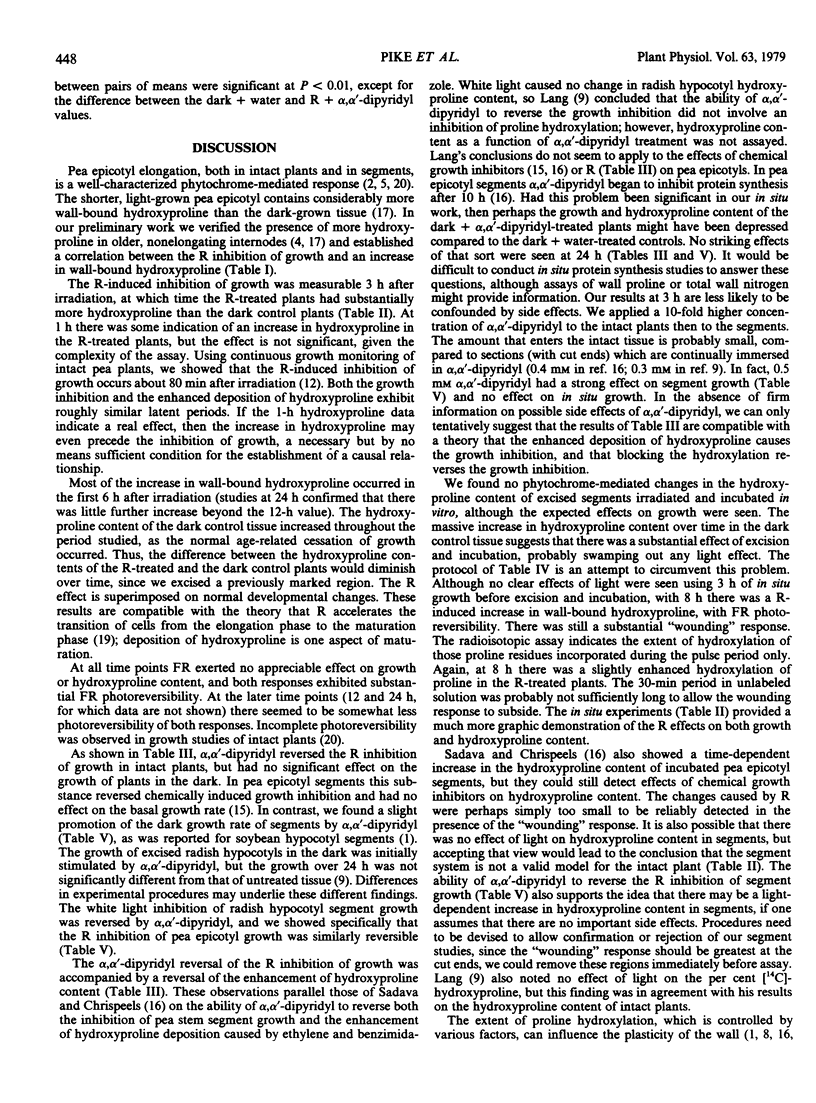
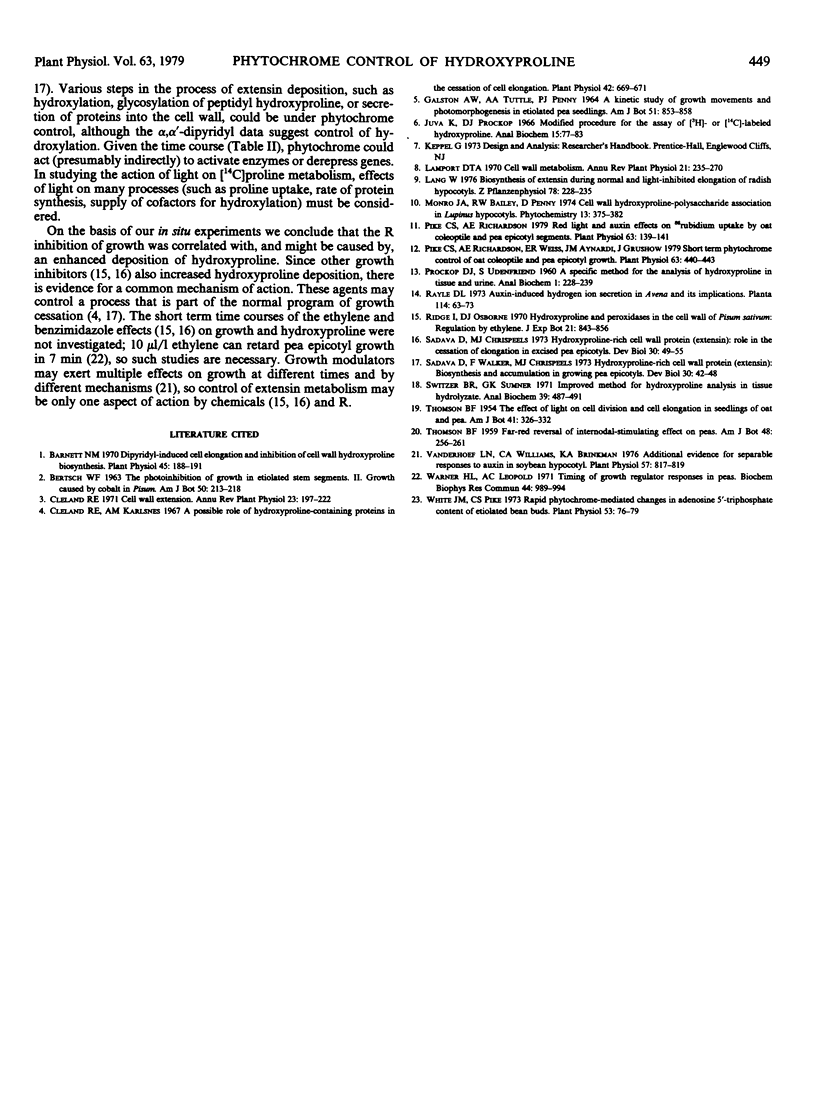
Selected References
These references are in PubMed. This may not be the complete list of references from this article.
- Barnett N. M. Dipyridyl-induced Cell Elongation and Inhibition of Cell Wall Hydroxyproline Biosynthesis. Plant Physiol. 1970 Feb;45(2):188–191. doi: 10.1104/pp.45.2.188. [DOI] [PMC free article] [PubMed] [Google Scholar]
- Juva K., Prockop D. J. Modified procedure for the assay of H-3-or C-14-labeled hydroxyproline. Anal Biochem. 1966 Apr;15(1):77–83. doi: 10.1016/0003-2697(66)90249-1. [DOI] [PubMed] [Google Scholar]
- PROCKOP D. J., UDENFRIEND S. A specific method for the analysis of hydroxyproline in tissues and urine. Anal Biochem. 1960 Nov;1:228–239. doi: 10.1016/0003-2697(60)90050-6. [DOI] [PubMed] [Google Scholar]
- Pike C. S., Richardson A. E. Red light and auxin effects on rubidium uptake by oat coleoptile and pea epicotyl segments. Plant Physiol. 1979 Jan;63(1):139–141. doi: 10.1104/pp.63.1.139. [DOI] [PMC free article] [PubMed] [Google Scholar]
- Pike C. S., Richardson A. E., Weiss E. R., Aynardi J. M., Grushow J. Short term phytochrome control of oat coleoptile and pea epicotyl growth. Plant Physiol. 1979 Mar;63(3):440–443. doi: 10.1104/pp.63.3.440. [DOI] [PMC free article] [PubMed] [Google Scholar]
- Sadava D., Chrispeels M. J. Hydroxyproline-rich cell wall protein (extensin): role in the cessation of elongation in excised pea epicotyls. Dev Biol. 1973 Jan;30(1):49–55. doi: 10.1016/0012-1606(73)90047-x. [DOI] [PubMed] [Google Scholar]
- Switzer B. R., Summer G. K. Improved method for hydroxyproline analysis in tissue hydrolyzates. Anal Biochem. 1971 Feb;39(2):487–491. doi: 10.1016/0003-2697(71)90438-6. [DOI] [PubMed] [Google Scholar]
- Vanderhoef L. N., Stahl C. A., Williams C. A., Brinkmann K. A. Additional evidence for separable responses to auxin in soybean hypocotyl. Plant Physiol. 1976 May;57(5):817–819. doi: 10.1104/pp.57.5.817. [DOI] [PMC free article] [PubMed] [Google Scholar]
- Warner H. L., Leopold A. C. Timing of growth regulator responses in peas. Biochem Biophys Res Commun. 1971 Aug 20;44(4):989–994. doi: 10.1016/0006-291x(71)90809-6. [DOI] [PubMed] [Google Scholar]
- White J. M., Pike C. S. Rapid Phytochrome-mediated Changes in Adenosine 5'-Triphosphate Content of Etiolated Bean Buds. Plant Physiol. 1974 Jan;53(1):76–79. doi: 10.1104/pp.53.1.76. [DOI] [PMC free article] [PubMed] [Google Scholar]


